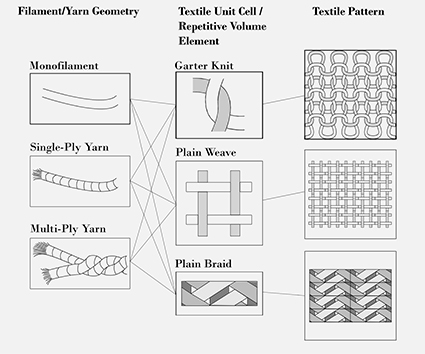Functional, or “smart,” materials can be used for engineering applications in fields such as medical devices, rehabilitation, aerospace, and defense. These pliable, lightweight materials can be created to provide actuation, sensing, energy harvesting, and communication. Researchers at the mechanical engineering department’s Design of Active Materials and Structures Laboratory (DAMSL) are involved in data-intensive investigations into these materials, with the current focus being shape memory alloy knitted architectures.
DAMSL does not have an existing infrastructure that allows researchers to easily manage simulation and experimental data. This means that individual researchers can miss connections between discoveries, unnecessarily repeat research effort, and fail to discover important trends. Mechanical engineering PhD student Kevin Eschen has developed an infrastructure to correct these problems.
Mr. Eschen was a 2019-20 UMII MnDRIVE PhD Graduate Assistant. His final project report, Active Textile Modeling and Experimental Characterization Data Management Infrastructure, was published in August 2020 and describes the proposed infrastructure, which includes an experimental data tool and a hierarchical modeling tool. The textile model for this project was run on MSI's supercomputers. Experimental data can be uploaded via a graphical user interface, and the hierarchical modeling tool connects sub-models. The infrastructure "preserves and connects experimental and simulated data, enables access and visibility to contributors within and outside the laboratory, and facilitates the identification of trends and trade-offs across investigated material and textile approaches."
Mr. Eschen is also an MSI researcher in the group of Assistant Professor Julianna Abel (Mechanical Engineering).
Description of image below: Repetitive Volume Element Models: Repetitive volume elements can be defined on the fiber/yarn level, the textile unit cell level, and the textile pattern level. The specific geometry selected for the validation of this modeling architecture is the monofilament garter knit geometry.
Research Computing partners:
- University of Minnesota Informatics Institute
- Minnesota Supercomputing Institute
